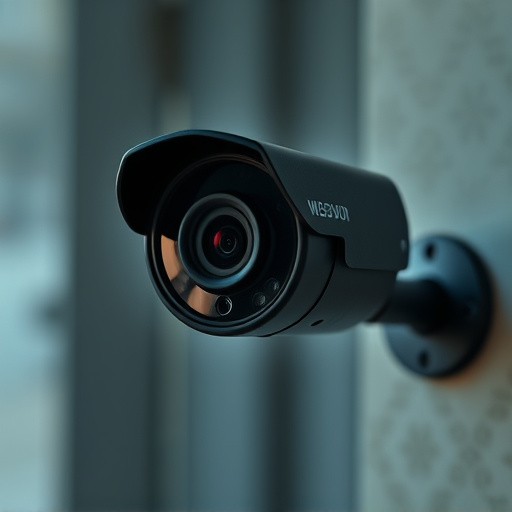Choosing a hidden camera with built-in DVR requires considering battery life, influenced by power consumption, battery size and quality, and environmental conditions. Optimizing settings, performing regular maintenance, and using suitable batteries like lithium-ion (Li-ion) or lithium polymer (LiPo) maximize battery lifespan for continuous monitoring. Smart habits such as motion-activated recording, power-saving modes, and firmware updates further extend battery life, preserving surveillance functionality without frequent recharging.
Uncover the secrets behind the battery life of your hidden camera with built-in DVR. This comprehensive guide, ‘Understanding Hidden Camera DVR Battery Life’, delves into the factors influencing these devices’ endurance. From environmental conditions to recording settings, we explore what matters most. Learn how to optimize battery life for continuous surveillance and discover the pros and cons of different battery types available in these discrete cameras. Gain insider tips to extend your hidden camera’s battery lifespan and ensure uninterrupted monitoring.
Understanding Hidden Camera DVR Battery Life: A Comprehensive Overview
Hidden camera with built-in DVR battery life is a crucial factor to consider when investing in surveillance equipment. These devices, designed for discreet and continuous monitoring, offer a unique blend of compactness and functionality. The battery life varies significantly based on several factors: recording resolution, frequency, and the device’s overall power consumption. Understanding these variables is key to ensuring your hidden camera with built-in DVR meets your specific needs.
Comprehensive testing and user reviews provide valuable insights into actual battery performance under different conditions. Manufacturers often specify expected battery life, but real-world usage can differ. By examining these tests and feedback, you gain a clearer picture of what to expect from various models. This knowledge empowers you to make informed decisions when choosing the right hidden camera with built-in DVR for your security or surveillance requirements.
Factors Affecting Battery Duration in Built-in DVR Cameras
The battery life of a hidden camera with built-in DVR is influenced by several key factors. One of the primary considerations is the camera’s power consumption, which can vary greatly depending on the model and its features. Advanced functions like higher resolution recordings, motion detection, and infrared capabilities typically demand more energy, leading to shorter battery durations. The size and quality of the battery also play a significant role; larger batteries with higher ampere-hour (Ah) ratings will generally provide longer operational time between charges.
Additionally, environmental conditions can dramatically impact battery life. Extreme temperatures, both hot and cold, can degrade battery performance and reduce its capacity. Prolonged exposure to direct sunlight or heat sources may cause the camera’s battery to deplete faster, while colder climates can slow down chemical reactions within the battery, affecting its power output. Proper storage and usage conditions are essential to maximize the lifespan of a hidden camera with built-in DVR.
Optimizing Battery Life for Continuous Surveillance
To maximize the battery life of a hidden camera with built-in DVR, consider adjusting settings and optimizing usage. Lowering the camera’s resolution and frame rate can significantly extend battery duration, ensuring continuous surveillance without frequent recharging. Enable motion detection features to activate recording only when necessary, conserving power during inactive periods. Additionally, regular maintenance, such as updating firmware and cleaning sensors, contributes to improved performance and longer battery life.
Regularly inspect the camera’s settings to ensure they are optimized for efficient energy use. Utilize time-lapse recording or scheduled recording schedules to reduce power consumption further. By implementing these strategies, you can extend the lifespan of your hidden camera’s battery, allowing for consistent monitoring without interruption.
Comparing Different Battery Types Used in Hidden Camera DVRs
When it comes to hidden cameras with built-in DVRs, battery life is a critical factor for ensuring continuous and uninterrupted surveillance. Different models often employ various battery types, each boasting unique advantages and drawbacks. Common options include lithium-ion (Li-ion), lithium polymer (LiPo), and alkaline batteries. Li-ion batteries are known for their high energy density, providing longer runtimes compared to their alkaline counterparts. However, they can be more sensitive to temperature extremes and require careful charging practices to maintain optimal performance.
On the other hand, LiPo batteries offer lighter weight and even higher energy density, making them a popular choice for compact hidden camera DVRs. While they also demand meticulous handling during charging, their ability to deliver consistent power over extended periods makes them worth considering. Alkaline batteries, while less expensive, generally have shorter lifespans and lower energy capacity compared to the lithium alternatives, rendering them suitable for temporary or low-demand surveillance applications.
Tips and Tricks for Prolonging Battery Life of Your Hidden Camera with Built-in DVR
To maximize the lifespan of your hidden camera with built-in DVR, adopt smart habits and utilize specific features. Firstly, adjust the recording settings to only capture motion-activated events; this prevents unnecessary battery drain when no activity is detected. Secondly, enable power-saving modes that reduce frame rates or resolution during low-light conditions. Regularly update firmware to access optimized energy management features exclusive to newer models. Additionally, ensure the camera operates on a stable power source to prevent sudden shutdowns, which can shorten battery life.
Consider using high-quality batteries specifically designed for your device and avoid leaving the camera on continuous recording for extended periods. Instead, schedule recordings around peak activity times or use motion detection to trigger recording only when needed. These tips will help you stretch the battery life of your hidden camera with built-in DVR, ensuring its continued surveillance functionality without frequent recharging.
